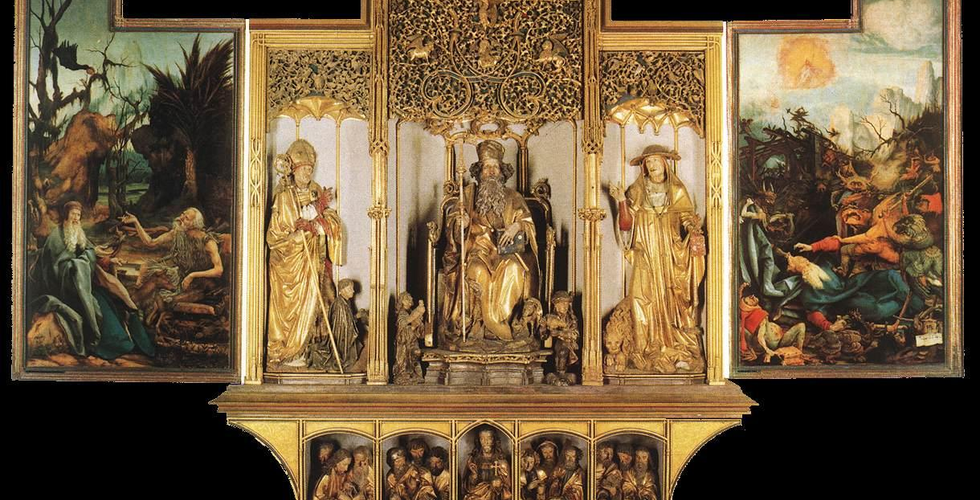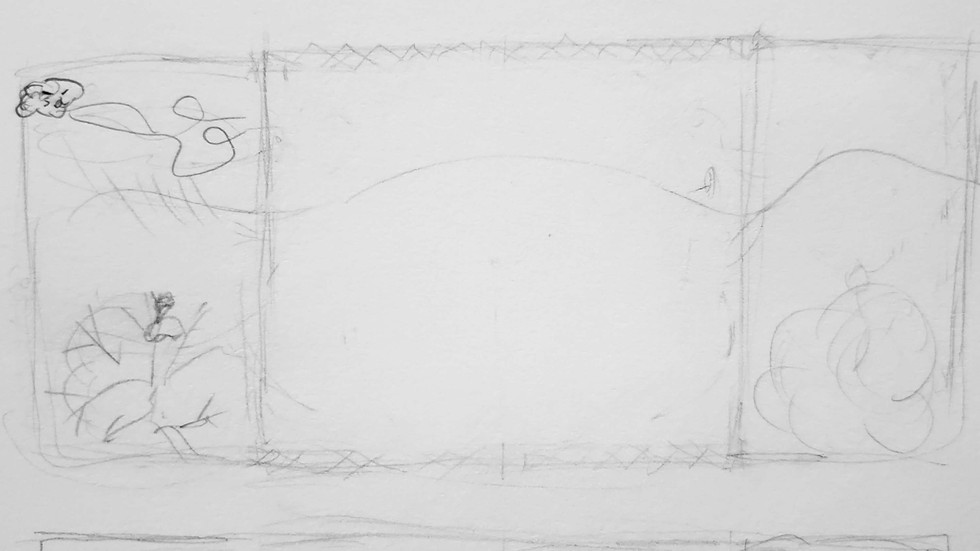Weather Report Suite Brainstorming (Part 1)
- Ash

- Jan 17, 2023
- 2 min read
Updated: Jul 24, 2023
You read that right! This year in honor of the upcoming 50th anniversary of Wake of the Flood and WRS being a personal favorite I am tackling this behemoth of a song.
I've always really admired religious artwork, especially in this case biblical art, for its creative use of both image composition and the physical arrangement of pieces in its display space as a narrative device. Especially the sort of cabinet-style altarpiece ala The Ghent Altarpiece or the Isenheim Altarpiece, the latter being particularly interesting in its use of layers of doors or wings to show related narratives in multiple polyptychs (4+ paintings that go as a set).

Despite being the same "image" (note the continuous background between panels), the Ghent Altarpiece arranges major narrative elements into their own compositions.
Isenhiem Altarpiece: The center panels are hinged to open outwards revealing another composition (and narrative!), which is also hinged to open outwards revealing additional images and sculpture.
From the outset I have visualized WRS as a piece like this, using the fold-out doors to separate Prelude, Part 1, and Let it Grow into separate narrative components, but with more cohesion than having them as a standard diptych or triptych. It also seemed particularly apropos in the context of WRS's strong theological themes.
Here are some rough sketches of this concept:
Image 1: Outer doors with a celestial motif for Prelude (??)
Image 2: Outer doors open to reveal panels with Part 1 narrative
Image 3: Part 1 panels open to reveal inner panels with the Let it Grow narrative.
Stay tuned for Part 2 for a dive into historical work I'm looking at as I compose the actual images themselves.














Comments